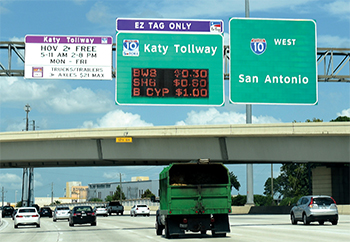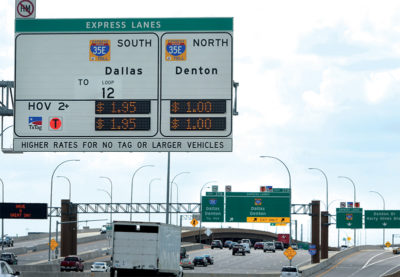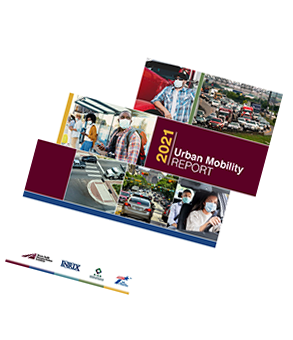Optimizing traffic flow is one goal of transportation agencies looking to improve mobility for transportation system users. Doing so reduces congestion, which not only optimizes roadway operations but also gets folks where they’re going faster while often improving safety. Managed lanes represent one method for achieving this, and many states have implemented them. Managed lanes use pricing to regulate demand.
“There are two main ways of pricing managed lanes,” says Mark Burris. Burris holds the Herbert D. Kelleher Professorship in Texas A&M University’s Zachry Department of Civil and Environmental Engineering. “With both methods, you want to keep traffic flowing smoothly. That’s the goal of the lanes, and it’s often a requirement from the Federal Highway Administration.”
Managed lanes offer travelers the option of avoiding congestion by paying for the privilege of reduced via user fees or by riding with others as a high-occupancy vehicle at a reduced cost. The two most common pricing mechanisms are variable tolls (which change based on time of day) and dynamic pricing (which varies based on congestion levels on the roadway). In theory, dynamic tolls should be able to regulate demand on managed lanes more effectively than variable tolls since they can change every few minutes in response to current traffic conditions.
“If you charge one price over an entire day, there are going to be times when that price is too low, and you will get too many people in the lane,” Burris explains. “That promotes congestion, which is, of course, exactly the opposite of the goal. There will also be times during the day when the price is too high, and very few will want to pay it. So, you need a flexible pricing system.”
Burris was the principal investigator on a study, Comparing Pricing Mechanisms for Managed Lanes, sponsored by the National Institute for Congestion Reduction (NICR), a national University Transportation Center dedicated to congestion reduction through multimodal solutions for the surface transportation system. The center is a consortium led by the University of South Florida and including TTI/Texas A&M University, the University of California–Berkeley, and the University of Puerto Rico at Mayagüez (UPRM). TTI teamed with UPRM on this research.
The project analyzed extensive traffic data sets from both variably priced and dynamically priced managed lanes to compare the effectiveness of both pricing methods. Both were found to be effective, with dynamic pricing having a slight advantage given the performance measures used.
Burris and his team accomplished the following project objectives in determining their findings:
- Compared the effectiveness of dynamic pricing with variable pricing on managed lanes.
- Developed pricing (tolling) performance metrics from both the traveler’s and toll authority’s perspectives.
- Formulated two new performance metrics to compare the two pricing methods: a scoring index and a graphical display of performance for visualizing effectiveness.
“We found that toll prices that change with traffic congestion in real time and toll prices that change with the time of day both work well to keep traffic flowing on managed lanes,” Burris reports. “Neither was clearly superior to the other. We also developed two new performance measures to determine the ability of the toll rate to regulate traffic flow on managed lanes.”
True to NICR’s national focus on congestion reduction, other research agencies can use these new performance measures to evaluate options for regulating managed lanes to better meet local needs.



